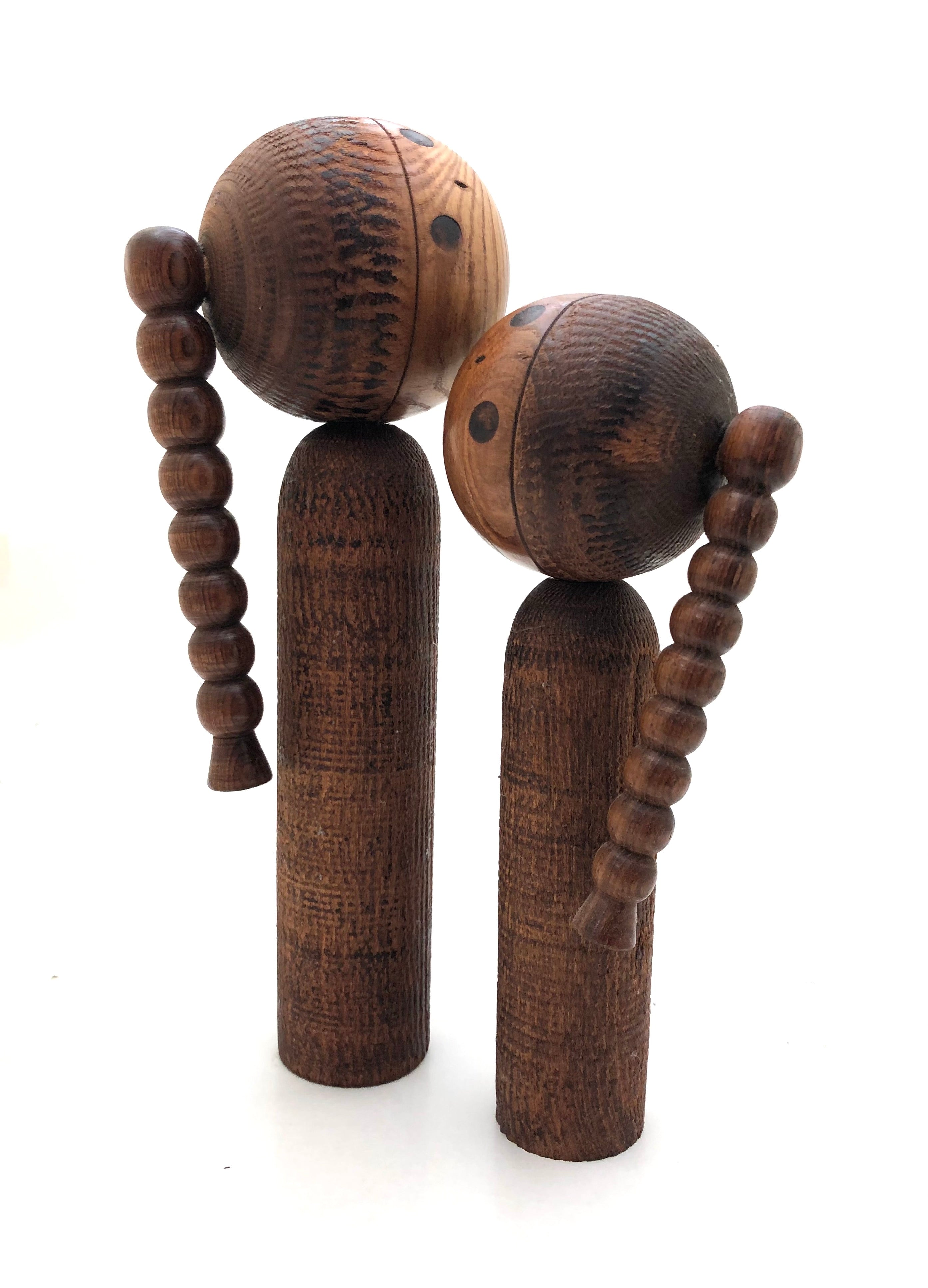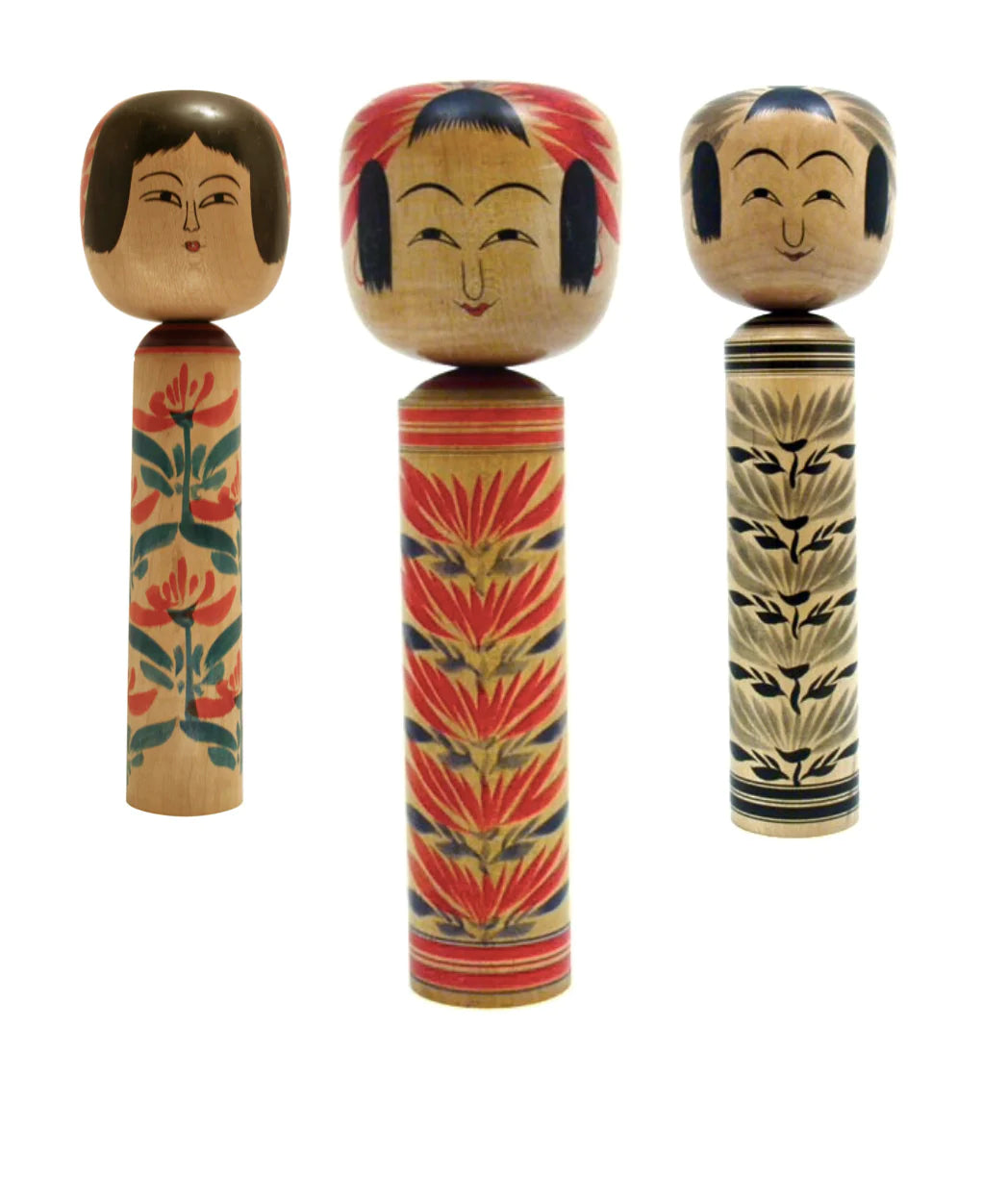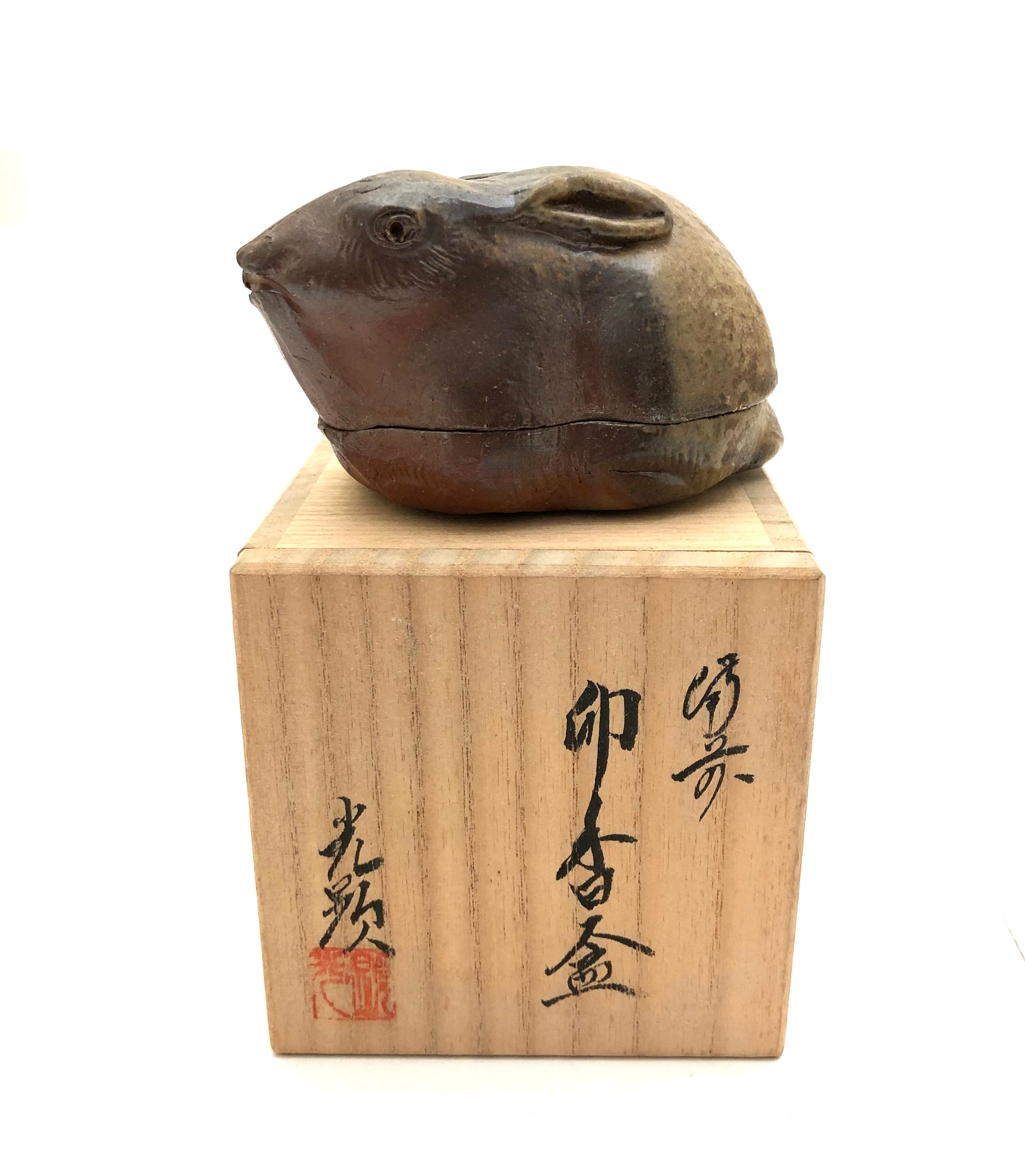
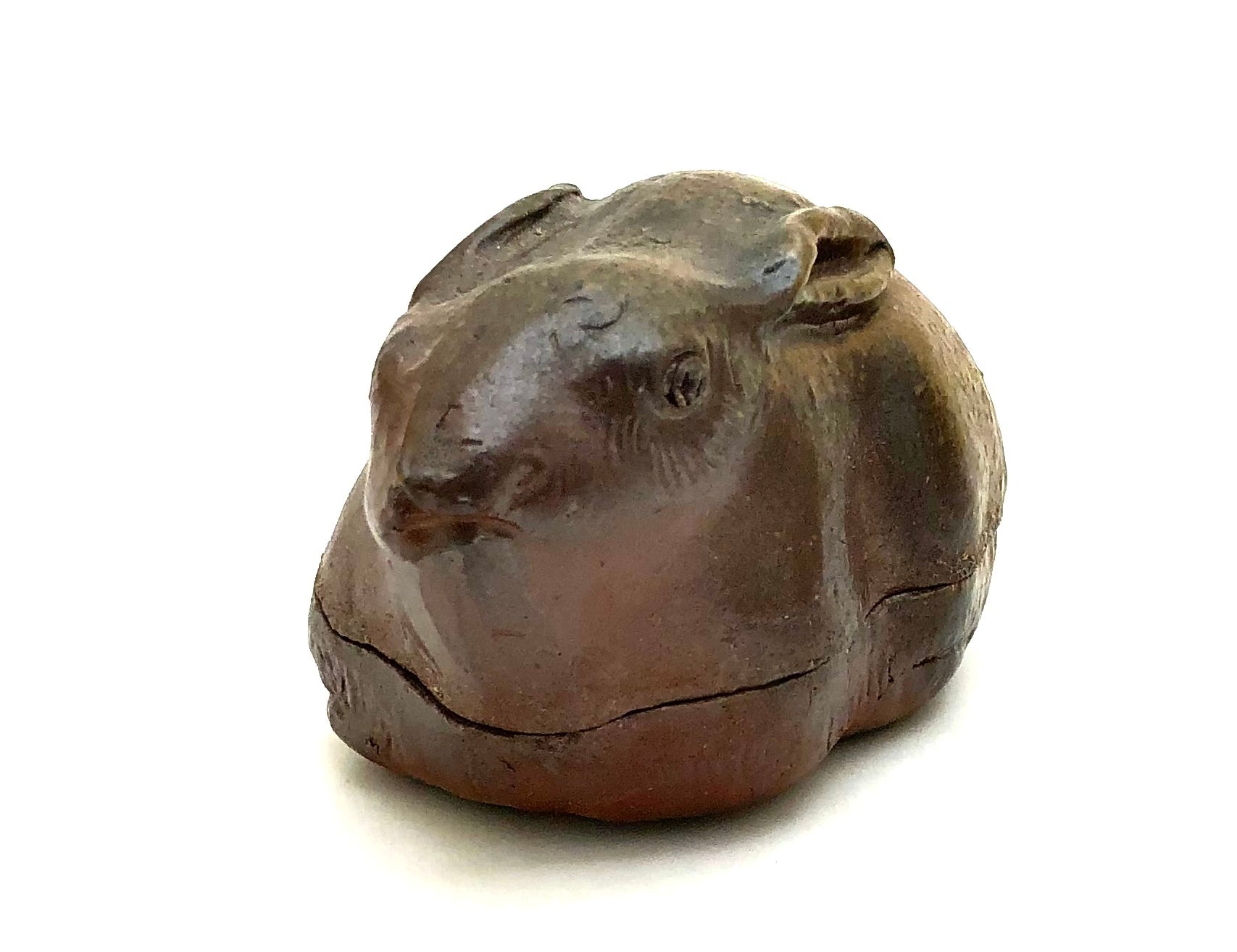
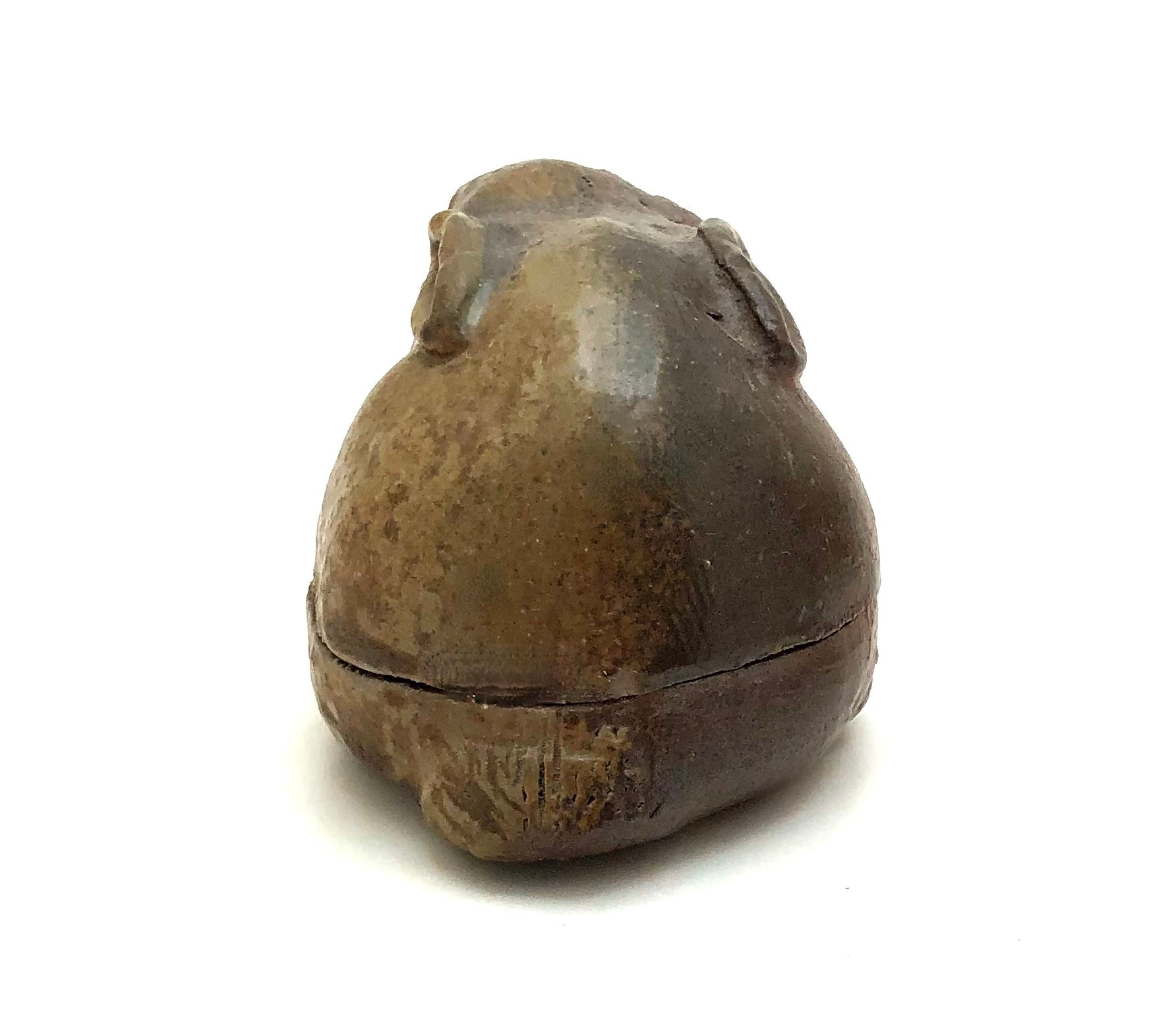
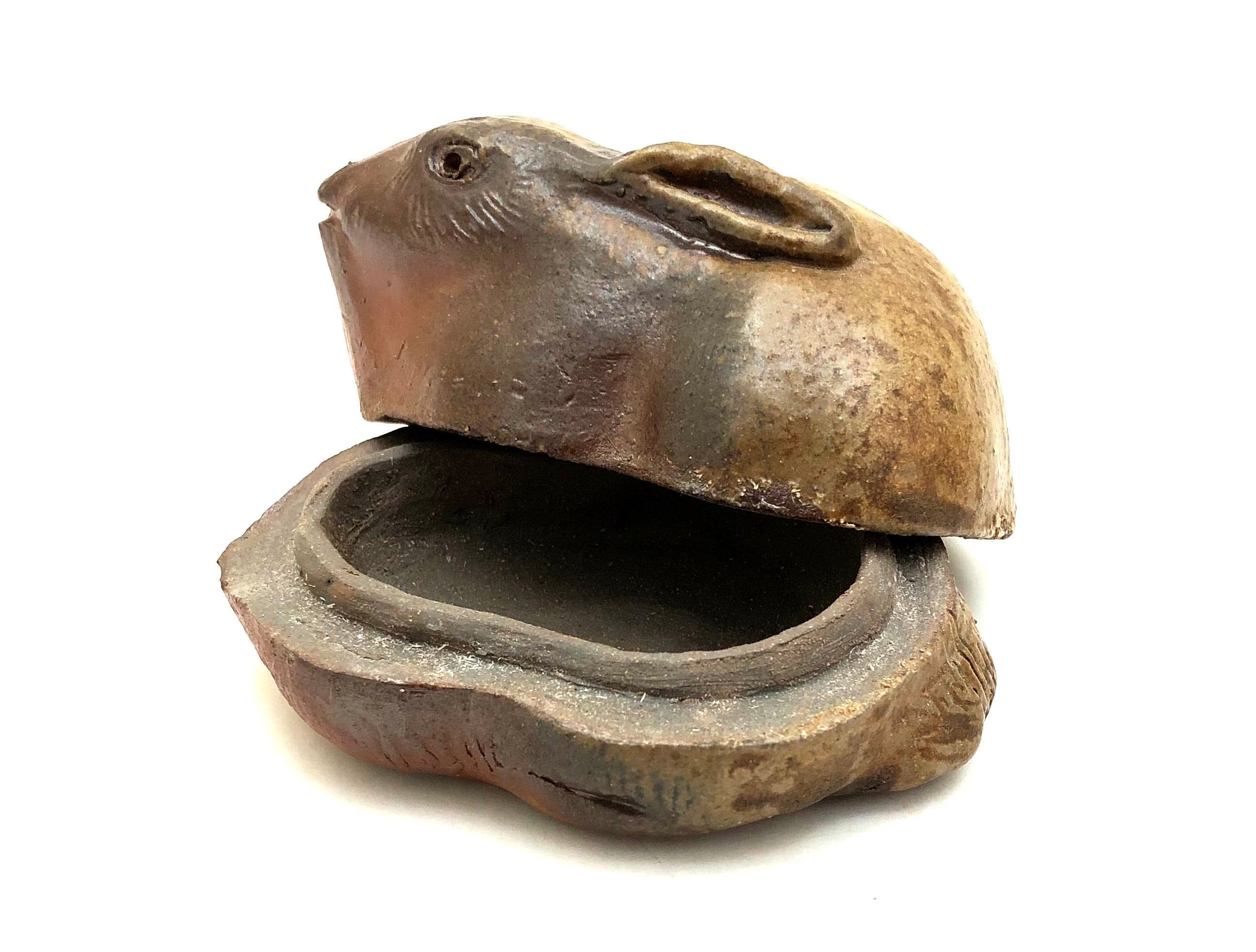
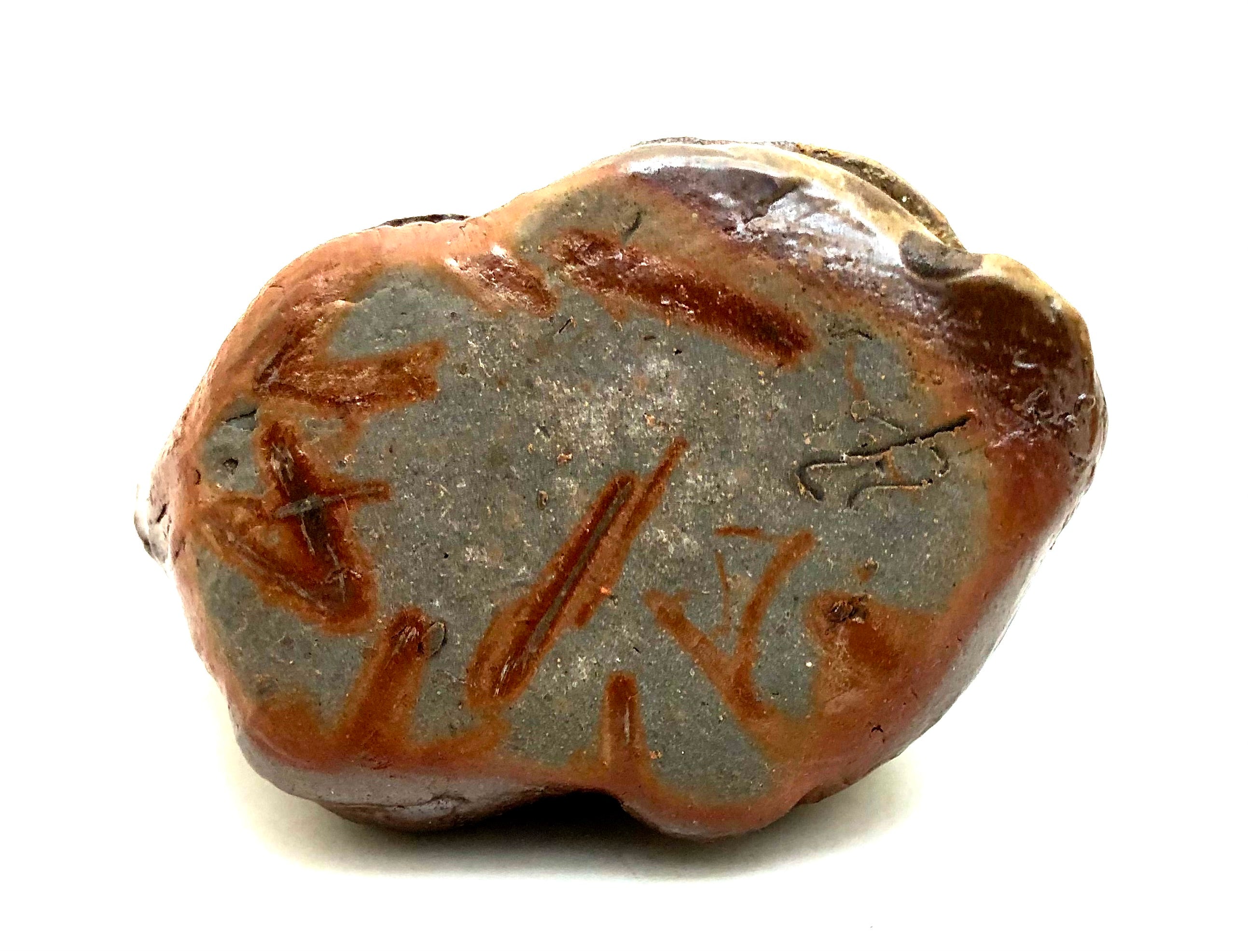
Japanese Antique Bizen-yaki Stoneware Rabbit Kogo / Kougou | Inscribed Koken Hibata
All our items ship free in the US
Dimensions: 3-0”h x 3-0”w x 2-0”d
This Japanese antique, unglazed Bizen-yaki Rabbit Kogo was purchased in Kanazawa, Japan and has an ironlike hardness, gradual coloration on a silken surface. It has beautiful white wood-ash accents, and a paddled design around the future: all a direct result of weeks of high-temperature firing. This well formed Kogo / Kougou represents a small ceramic container used to hold a few pieces of incense, either Neriko or Kouboku. During Sumidemae the Kogo is brought into the room together with other needed utensils for Sumi, along with the Sumitori charcoal container.
The two-piece Bizen-yaki rabbit, through a boring method called, 'Yohen', (which refers to the effect of the abundance of ash cover) creates a variety of colors, also known as a kiln 'mutation' adding dimension to the fur, its expressive eyes, and long, laid-back ears. It has marvelous detail and attention to modeling. The piece has an impressed mark on the bottom as well as being signed, on its original Kiriwood box with the name Koken Hibata.
Condition: No damage, no chips, no cracks, or restorations. It is beautifully made, and is of high quality. This Bizen artist chose well when creating the thickness of ash, which produced a lovely combination of brown and natural kiln glaze. This piece is an indication of a talented and experienced artist who created it.
Additional Information:
Bizen-yaki is the pottery of Okayama Prefecture in Japan and was chosen as one of the famous old 6 potteries, called Rokkoyo. This pottery is also referred to as being of the Wabi-sabi: the comprehensive view or aesthetic centered on the acceptance of transience and imperfection. The aesthetic is sometimes described as one of beauty that is imperfect, impermanent, or incomplete.
Incense from the Kogo is placed in the charcoal fire to create a nice smell as the Sumi gets hotter and hotter. Usually there are about three pieces in the Kogo incense container but only two are placed in the fire, one near the fire and a second one more distant from the fire to start burning later, which will give off a continuous fragrance in the Chashitsu.
Return Policy
Our antique/vintage pieces are identified/described and professionally photographed, and considered, “as is”, therefore all sales are final. Read our full refund and return policy.

